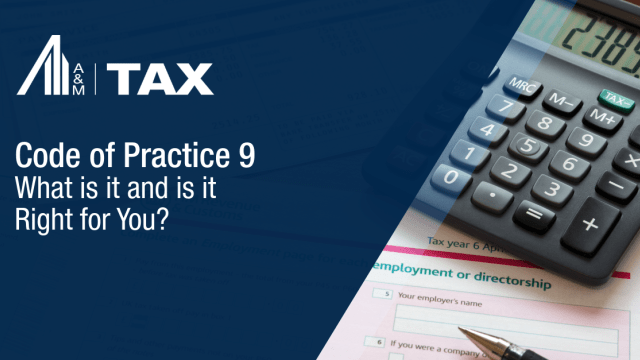A Check Under the Hood: Now Is the Time for a Methods “Tune Up”
2010 - Issue 24 - Tax accounting methods planning has often been an afterthought for many taxpayers because it generally does not create an effective tax rate benefit for the company. Given that the US recovery from recession is still bumpy, now is a perfect time to give accounting methods a much closer look. Cash is front of mind for many right now. With restricted access to credit, many taxpayers are looking to cut spending to free up liquid resources and maintain profits without the continued growth they have relied on in the past.
Taxpayers may be able to play an important role in making this happen through the strategic use of accounting method changes. For example, accounting method changes that provide a one-year favorable transition adjustment (commonly referred to as a “Section 481(a) adjustment”) can provide tax departments with opportunities to create positive cash flow for their companies either through a reduction in estimated tax payments or, in the case of creating or enhancing a net operating loss (NOL), an opportunity for refunds of prior taxes paid. The non-exhaustive list below highlights some of the more common areas where a taxpayer might identify a more favorable accounting method.
Revenue Deferral
- Advance payments received
- Disputed income
- Unbilled receivables
Expense Acceleration
- Wholly or partially worthless bad debts
- Prepaid expenses
- Liability reserves (e.g., “incurred but not reported” liabilities for self-insured medical claims, workers compensation, retiree medical benefits)
- Depreciation cost recovery for fixed assets
- Software development costs
- Repairs and maintenance expenditures
- Transaction costs
- Compensation accruals (e.g., salaries, bonuses and payroll taxes)
- Inventory costing (e.g., uniform capitalization (UNICAP), lower of cost or market, and subnormal goods)
Whether any specific method change can be achieved with or without the advance consent of the Internal Revenue Service (IRS) would largely be based on the exclusive administrative authority provided by Revenue Procedures 2008-52 and 2009-39, as well as other relevant guidance.
These opportunities to change accounting methods serve not only as a means for generating cash flow by reducing taxes for current, future or prior tax years (through an NOL carryback) but also as a means of reducing tax exposure for prior years. The IRS offers an attractive incentive for taxpayers to voluntarily correct impermissible methods before they are potentially discovered under audit. Specifically, a taxpayer that voluntarily requests a change in a method through a properly filed Form 3115 is often afforded audit protection on the issue for earlier years. This would enable a taxpayer to reduce its exposure for interest and penalties that could otherwise apply if the IRS were to discover the use of an impermissible method.
Aside from any cash flow impact to the taxpayer, any successful remediation initiated by a taxpayer may support the reversal of any accrued interest and penalties for uncertain tax positions (UTPs) recorded for financial reporting purposes and result in a positive impact on earnings. The elimination of the UTP would also serve to avoid disclosure of the item to the IRS under the controversial disclosure rules made public in Announcement 2010-09.
Things to Consider before Making a Method Change
Before spending too much time determining which of these voluntary method changes may be beneficial, a taxpayer should step back and consider a number of important factors. While these factors are often specific to a taxpayer’s facts and circumstances, some of the more common factors include the following:
- Eligibility to make an automatic method change: Taxpayers must fall within the scope of Rev. Procs. 2008-52 and 2009-39 and meet other strict procedural rules in order to avail themselves of the more than 140 automatic method changes currently available. Taxpayers not falling within the scope of automatic change procedures will be required to obtain advance consent from the IRS.
- Availability of audit protection: Not all voluntary method changes provide audit protection for prior years, even those enumerated under the automatic change procedures.
- Limitations under IRS examination: Special rules govern the ability to obtain a method change when a taxpayer is under an IRS examination. In general, for any type of voluntary method change (whether or not it’s an automatic change), a taxpayer cannot file a change request unless it is in one of two “window periods” or it receives the consent of the director. The status of the audit, the relationship with the examining agent and the existence of “bargaining chips” may also affect the ability to obtain a method change while under examination.
- Time period for approval: The IRS is not required to approve method change requests within a specific time frame. Since changes requiring IRS consent cannot be taken into account prior to obtaining approval, taxpayers with a unique method change request that are averse to filing amended tax returns may end up foregoing a potential opportunity (while the IRS is reviewing the request).
- Terms and conditions: The tax law may mandate that certain terms and conditions be satisfied in order to change a method. These may involve conformity with books, the type of transition mechanism (e.g., 481(a) adjustment or cut-off method), the duration of the transition mechanism, adjustments to earnings and profits (E&P) computations and the related impact to distributions.
- Ongoing maintenance: The ability to coordinate internal resources and capture the accounting information necessary to properly and consistently apply the new method on a prospective basis should be considered.
- Ancillary consequences: Taxpayers should take a holistic view when it comes to method changes to avoid any unexpected surprises down the road. For example, certain method changes related to inventory may require a taxpayer to update its inventory capitalization calculation, which may negate a portion of the expected current benefit. Likewise, a taxpayer seeking to change its method of accounting to deduct repair and maintenance costs by redefining the unit of property should consider that changing the unit of property will have broader ramifications, such as changing the way disposals will be tracked going forward.
Method Planning and NOL Carrybacks
Many taxpayers are experiencing the first NOLs they have had in recent history. This occurrence — coupled with favorable legislation enacted in late 2009 that expanded the two-year NOL carryback to five years for NOLs generated in tax years ending after December 31, 2007, and beginning before January 1, 2010 — is providing taxpayers with a unique opportunity to generate cash rather quickly using methods planning. The window of opportunity is still open for calendar-year taxpayers that have yet to file a 2009 return and fiscal-year taxpayers whose 2009 tax year begins before January 1, 2010.
Before analyzing method changes to take full advantage of the NOL carryback provisions, taxpayers should determine whether an NOL carryback is even available. For example, certain corporate transactions could limit the benefit or restrict an NOL carryback, such as deductions attributable to corporate equity reduction transactions and separate return limitation year (SRLY) restrictions applying to members joining or leaving a consolidated group. Further, even if the NOL carryback is not limited, the impact of an NOL carryback to foreign tax credits, Section 199 benefits and R&D tax credits claimed in prior years should be analyzed.
A taxpayer also needs to consider what an NOL carryback will do to its statute of limitations. If a taxpayer’s prior tax year is not currently under audit and the statute of limitations for this year has closed, the taxpayer may have recognized the benefit of any UTPs for the closed tax years in its financial statements. However, if a taxpayer carries back an NOL to a closed tax year using the expanded carryback period, the door cracks open just a bit. Although the IRS may not be able to assessadditional tax for the closed year, it has the authority to determine a deficiency in the carryback year related to any item and offset the tax benefit otherwise available from the NOL carryback by such deficiency. For example, a taxpayer that accelerates deductions for repairs and maintenance expenses for 2009 using a change in accounting method may carryback a resulting NOL to a year that contains exposure related to R&D tax credits. In this case, the IRS could decide to examine aspects of the R&D tax credits claimed in the carryback year and, if any portion of the credits is determined to be disallowed, use such disallowed amount to offset the refund claim. Therefore, without careful planning, a temporary cash strategy could be turned into a permanent book effective tax rate hit.
On the flip side, NOL planning can create beneficial consequences to the book effective tax rate. For example, a calendar-year taxpayer that accelerates deductions from 2010 into 2009 could effectively increase the benefit of its Section 199 manufacturing deduction for 2010, given that this deduction is statutorily limited by taxable income. This would have a positive impact on its 2010 book effective tax rate. Furthermore, a taxpayer that can monetize its current-year NOLs through carrybacks does not need to evaluate whether or not the NOLs will require a valuation allowance that would create additional tax expense in the financial statements.
Alvarez & Marsal Taxand Says:
Taxpayers looking to improve cash flow by reducing income taxes payable or maximizing refund opportunities should seriously take into consideration method planning opportunities. Although method planning may not always yield the recurring tax benefits associated with other sophisticated tax planning opportunities (e.g., intellectual property shifting, shared services company, foreign finance company), method planning generally does not entail an intrusive restructuring of business operations. Therefore, taxpayers can often capitalize on such opportunities with minimal disruption to business operations. Method planning benefits are also amplified when considered in connection with current NOL carryback opportunities that will soon disappear. In short, the change in accounting method rules can sometimes be difficult to navigate, but the cash benefits that method planning can generate often make it worth the journey.
Author:
Sean Menendez
Managing Director, Miami
305-704-6688
Profile
Danielle Hutcheson, Senior Director, and Fernando Diaz, Director, contributed to this article



